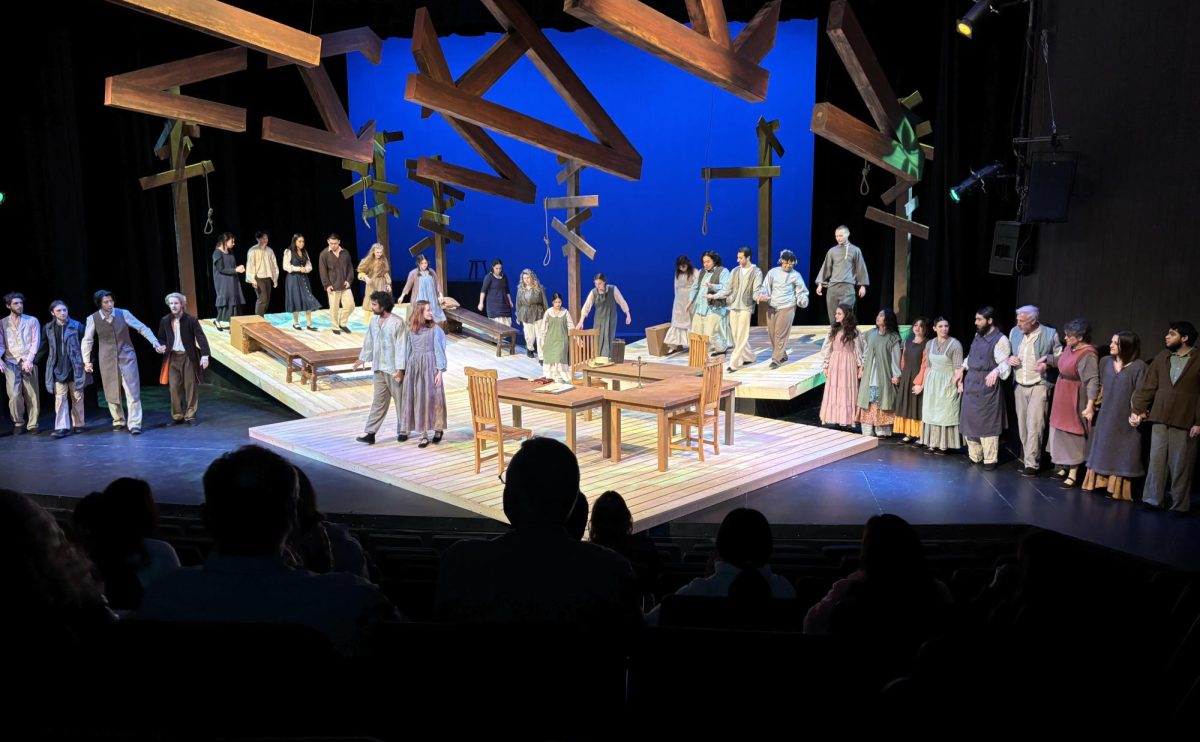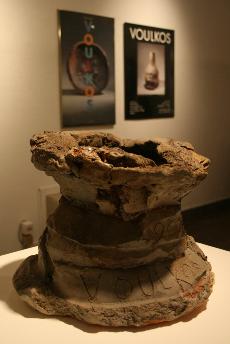He’s been called the “father of California ceramic sculpture,” “America’s most original potter,” and a “craftsman with the soul of an abstract expressionist.”
And now Peter Voulkos is the subject of an exhibition that runs until March 19 in the DVC art gallery.
An internationally acclaimed artist who also taught at UC Berkeley, Voulkos died in 2002 at age 78.
His work on display varies from abstract variations of clay ice-buckets to colorful and equally abstract monotype prints.
The clay pieces have odd shapes, ornamentation and peculiarities that defy definition.
One such piece, “Astrurias,” displayed on its own pedestal, is called an ice-bucket. But it looks nothing like one, what with its seemingly random cuts, tears, and etchings that make it a one-of-a-kind piece of art.
 Although others tried to imitate his work, they were never successful, said Vaea Marx, who was Voulkos’ right-hand man.
Although others tried to imitate his work, they were never successful, said Vaea Marx, who was Voulkos’ right-hand man.
“They don’t have the guts, you know,” he said. “If you watch him, when he puts his hand in the clay and then tears it apart and slaps it back on…”
Vaea moved his hands as if suddenly tearing a handful of clay from the side of a plate.
“They try to imitate, but they are too nice about it,” he said.
Scattered along the walls of the gallery are several monotypes.
The mixture of colors is often interrupted with an intentionally torn or ripped-out segment, evidence of Voulkos’ artistic mind at work.
 Sam Jornlin of Voulkos & Co., once an assistant to Voulkos, said much of the artists’ work was done impromptu with any tool he had at hand.
Sam Jornlin of Voulkos & Co., once an assistant to Voulkos, said much of the artists’ work was done impromptu with any tool he had at hand.
“If he didn’t have a pencil and there was a nail there,” Jornlin said, “he would just take the nail.”
In the center of the room, across from a looped video of Voulkos at work, a model made of thick bars cast in bronze vaguely resembles a complex drainage system.
Also on display are Voulkos’ clay plates, which are 19 inches in diameter and almost 3 inches thick.
“He was as much an artist as he was a potter,” Jornlin said.
Voulkos once said in an interview he pursued his art because he wanted to know what his next piece would be. He let his artistic sense carry him through his work.
He let his artistic sense carry him through his work.
“He was following his own trajectory,” Jornlin said. “In teaching, he wanted students to follow their own trajectory. He didn’t care whether they were in math, or art. He wanted them to learn how to think.”









































































